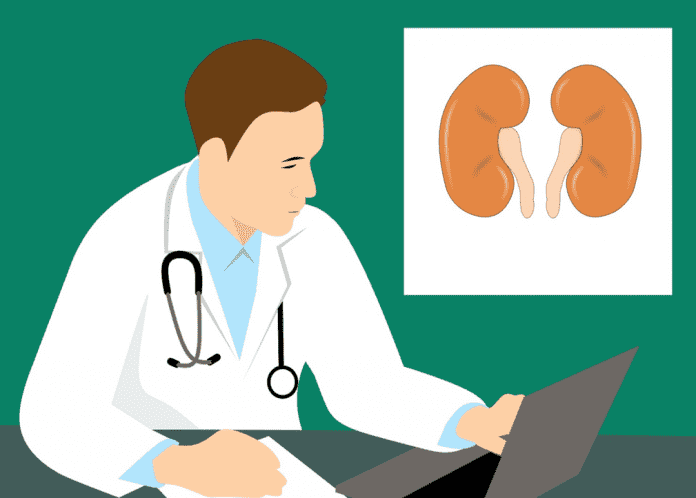Last Updated on March 12, 2024 by admin
In children, Wilms tumor is the most common kidney cancer. As diagnosed by experts like nephrologists in Karachi, it is more common unilaterally, with a 5 percent incidence of bilateral tumors. This tumor has a high occurrence rate in children under the age of 5 years and is less common in children under this age. Full recovery is possible with timely diagnosis and treatment. Read on to learn more about Wim’s tumor, its symptomatology, and management:
Table of Contents
What is Wilms tumor?
Also known as nephroblastoma, Wilms tumor is kidney cancer, most prevalent in children under the age of 5 years. In fact, this is the most common cancer in this age group. Wilms tumor is divided into two types, based on the cancer’s histology or microscopic architecture. The cancers with favorable histology are the ones that do not have much change or anaplasia. About 9 out of every 10 cases of Wilms tumors are of this type.
The other type of Wilms tumor is one having anaplastic histology in which the cancer cells have distorted histology and are very large. These tumors are notoriously harder to treat and also spread faster than the other kind.
What are the symptoms of Wilms tumor?
Wilms tumors do not often present with particular symptoms. In some children, there are no obvious signs, and the diagnosis is made on investigation. In others, the following signs and symptoms are present:
- Palpable abdominal mass
- Abdominal pain and swelling
- Fever
- Constipation
- Loss of appetite
- High blood pressure
- Blood in the urine
- Nausea and vomiting
- Shortness of breath
In some cases, the tumors can grow quite large before being noticed. The average size of the tumor is one pound.
What are the risk factors for Wilms tumor?
The following are the risk factors for this type of tumor:
- Children between 3 to 5 years of age
- Family history of tumor
- Babies born with birth defects like ectopic testicles, the opening of the urethra on the underside of the penis (hypospadias), oversized leg or arm, partial lack or complete lack of iris in the eye (aniridia), or any other rare health condition.
- This tumor has a female predominance.
- Children with certain health conditions are more prone to developing Wilms tumors. These conditions include WAGR syndrome, microcephaly—a baby born with a small head, Beckwith-Wiedemann syndrome—causing large-sized internal organs, and boys with Denys-DrashSyndrome—with gonadal dysgenesis and boys having female traits as well.
How is Wilms’s tumor diagnosed?
Diagnosis of Wilms tumor involves a complete history and diagnosis of the patient, along with blood tests and urine tests to check how well the kidneys and liver work. This is followed by imaging tests like MRI, CT scan, and ultrasound to find the size of the lesion and the involvement of surrounding structures. Bone scan and biopsy of the kidneys are also part of the diagnostic investigations for Wilms tumor.
How is Wilms’s tumor treated?
The treatment of Wilms tumor is based on chemotherapy, radiation therapy, and surgery.
Surgery: the procedures approved for Wilms tumor includes partial or radical nephrectomy or removal of both kidneys.
Chemotherapy: certain chemotherapeutic medications are used to fight cancer cells in the body. The side effects of chemotherapy include fatigue, mouth sores, loss of appetite and bruising.
Radiation: strong radiation from a machine is used to kill the cancer cell. Radiation therapy is used for Wilms tumor stage III and above.
The outlook for this type of tumor is good. Children diagnosed and managed timely by healthcare experts, available for booking atoladoc.com, can have cancer remission. Thereafter, the children regularly visit the doctor to ensure they remain disease-free.
Overview
Wilms tumor, also known as nephroblastoma, is a type of cancer that affects the kidneys. It is the most common type of kidney cancer in children, with most cases diagnosed before age 5. This tumor is named after Max Wilms, a German surgeon who first described it in 1899. Here is an overview of Wilms tumor, including its causes, symptoms, diagnosis, and treatment.
Causes: The exact cause of Wilms’s tumor is unknown. However, research has shown that certain genetic mutations and abnormalities play a significant role in the development of this tumor. In some cases, Wilms tumor may be inherited from a parent.
Symptoms: The symptoms of Wilms tumor may vary depending on the size and location of the tumor. The most common symptom is a mass or lump in the abdomen that can be felt. Other symptoms may include abdominal pain, fever, nausea, vomiting, loss of appetite, and blood in the urine.
Diagnosis: Wilms tumor is usually diagnosed through imaging tests such as ultrasound, CT scan, or MRI. A biopsy may also be performed to confirm the diagnosis.
Treatment: The Wilms tumor treatment usually involves surgery, chemotherapy, and radiation therapy. The goal of treatment is to remove the tumor and prevent it from spreading to other parts of the body. In most cases, the prognosis for Wilms tumor is excellent, with a 90% cure rate.
Read more: Ovarian Cancer – Most Common Cancer in Women.

























